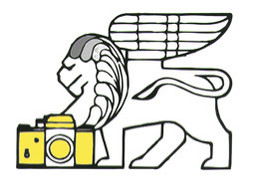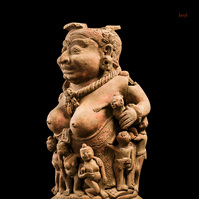MAJAPAHIT Sculptures from a Forgotten Kingdom, remembering Paolo
February 23, 2024Segue in Italiano -
“Rarely do I find myself writing about a book to which I have contributed. First and foremost, I consider it pointless, if not harmful, to add words to my visual work. Secondly, self-celebrations seem uninteresting to me, if not downright unpleasant. However, in this circumstance, I want to share thoughts related to the photography of cultural artifacts, at least according to my interpretation accumulated over many years. The story of this book suffered a great loss with the untimely passing of the creator, Engineer Paolo Bertuzzi, who could not witness the publication of the work. I am convinced that somewhere he can observe it and probably appreciate it. I confess that Eastern sculpture has always been distant for me. Unlike many colleagues who study the subject before photographing it, I have mainly followed instinct, thanks to a strong experience in shooting sculptures in the past. The mystery surrounding these works, their apparent connection to a completely different world, has guided more instinctive than rational reasoning. Leaving technical-scientific considerations to the experts, I ventured into photo sets arranged to capture emotions and forms communicated by these sculptures. Sometimes I reflected on already seen human situations, especially those zoomorphic in our Romanesque; other times, I delved into imaginary or almost science-fiction worlds. Touching materials often extremely friable, I felt the work necessary to extract them from the earth and return them to a vision accessible to all. The image I want to find in the mind is that of an army of pieces lined up and side by side, coming from a gigantic production of an imaginary industry of human beings. This image represents a ritual, beyond the quality and authenticity of the works, often the real driving force of a higher transcendence, towards dimensions difficult to explain but that can only be felt or intuited.
The ritual I joined, as almost always with my photographic equipment, was with the intention of bringing to light forms and contents of initially unfamiliar but now known and powerful subjects in their apparent simplicity.
I am particularly satisfied with the color rendering of the photographs, not taken for granted in many lived editions, sometimes with suffering. When I was handed one of the first copies of the book, my thoughts immediately went to Paolo Bertuzzi, with whom I spent many hours reasoning, discussing, and photographing art. I want to thank him because it was a journey I will not forget.
MAJAPAHIT
Sculptures from a Forgotten Kingdom
BY (AUTHOR) AGUS ARIS MUNANDAR
“Raramente mi trovo a scrivere di un libro a cui ho contribuito. In primo luogo, ritengo inutile, se non dannoso, aggiungere parole al mio lavoro visivo. In secondo luogo, le autocelebrazioni mi risultano poco interessanti, se non addirittura sgradevoli. Tuttavia, in questa circostanza, desidero condividere pensieri legati alla fotografia di beni culturali, almeno secondo la mia interpretazione accumulata in tanti anni.
La storia di questo libro ha subito una grande perdita con la prematura scomparsa dell’ideatore, l’Ingegnere Paolo Bertuzzi, che non ha potuto vedere la pubblicazione dell’opera. Sono convinto che da qualche parte possa osservarla e probabilmente apprezzarla.
Confesso che la scultura orientale è sempre stata distante per me. A differenza di molti colleghi che studiano il soggetto prima di fotografarlo, ho seguito principalmente l’istinto, grazie alla forte esperienza nelle riprese di sculture nel passato. Il mistero intorno a queste opere, il loro legame apparente a un mondo completamente diverso, ha guidato ragionamenti più istintivi che razionali.
Lasciando agli esperti ogni considerazione tecnico-scientifica, mi sono avventurato in set fotografici allestiti per catturare emozioni e forme comunicate da queste sculture. A volte riflettevo su situazioni umane già viste, soprattutto quelle zoomorfe del nostro romanico; altre volte mi spingevo in mondi immaginari o quasi fantascientifici. Toccando materiali spesso estremamente friabili, sentivo il lavoro necessario per estrarli dalla terra e restituirli a una visione accessibile a tutti.
L’immagine che desidero ritrovare nella mente è quella di un esercito di pezzi allineati e affiancati, provenienti da una produzione gigantesca di un’industria immaginaria di esseri umani.
Questa immagine rappresenta un rito, al di là della qualità e dell’autenticità delle opere, spesso il vero motore di una trascendenza superiore, verso dimensioni difficili da spiegare, ma che si possono solo sentire o intuire.
Il rito a cui mi sono affiancato, come accade quasi sempre con la mia attrezzatura fotografica, è stato con l’intento di riportare alla luce forme e contenuti di soggetti inizialmente non familiari, ma ora noti e potenti nella loro apparente semplicità.
Sono particolarmente soddisfatto della resa cromatica delle fotografie, non scontata in molte edizioni vissute, a volte con sofferenza. Quando mi è stata consegnata una delle prime copie del libro, il mio pensiero è andato subito a Paolo Bertuzzi, con il quale ho trascorso molte ore a ragionare, discutere e fotografare l’arte. Desidero ringraziarlo perché è stato un percorso che non dimenticherò.
Sculptures from a Forgotten Kingdom
BY (AUTHOR) AGUS ARIS MUNANDAR






